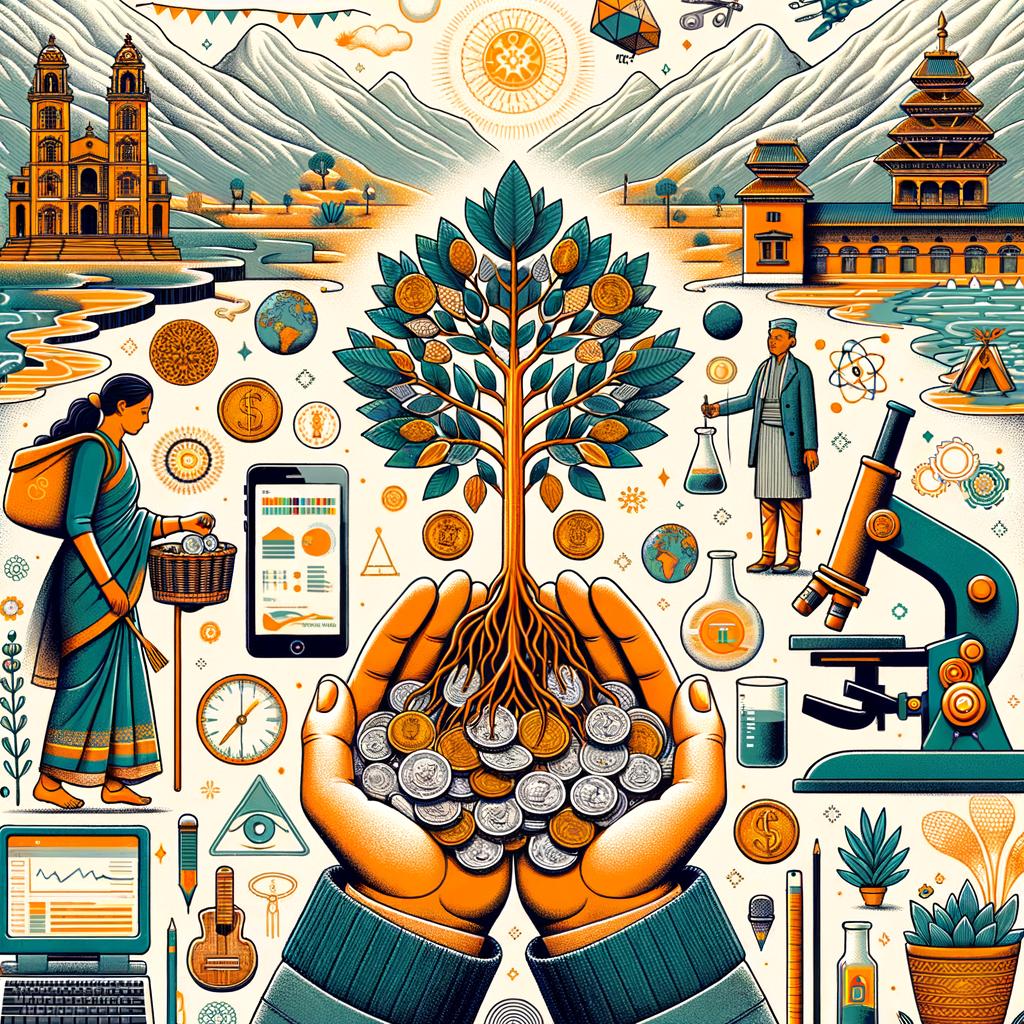In the heart of the majestic Himalayas, where time-honored traditions intertwine with evolving societal norms, Nepal stands as a testament to the resilience and strength of its women. In a landscape marked by both breathtaking beauty and economic challenges, grassroots movements are igniting transformative change. Central to this evolution is the realm of microfinance, a powerful tool that has empowered countless women to rewrite their narratives, seize control of their destinies, and uplift their communities. This article embarks on a journey through Nepal’s vibrant tapestry of hope and determination, exploring how microfinance serves not just as a financial lifeline, but as an instrument of empowerment. As we delve into personal stories, cultural shifts, and the impact of collective effort, we recognize that the path to sustainable change is paved with courage, innovation, and the unwavering spirit of Nepal’s women.
Catalyzing Economic Opportunities Through Microfinance for Women
In the verdant hills of Nepal, a revolution is taking root—one that places women at the heart of economic transformation. Microfinance initiatives have emerged as a critical lifeline, enabling female entrepreneurs to access the capital they need to foster their businesses and uplift their communities. With the infusion of small loans, women are not just gaining financial independence; they are also becoming pivotal agents of change, nurturing projects that range from traditional crafts to sustainable agriculture. The ripple effect of this empowerment is multifaceted, leading to increased household incomes and improved access to education and healthcare for their families.
The success stories are numerous and diverse, highlighting the profound impact of financial inclusivity. Numerous women, once constrained by societal norms, now stand as leaders in their fields. Consider the following key benefits that microfinance offers:
- Financial Independence: Women gain control over their finances, enabling them to make decisions that affect their lives and families.
- Community Growth: As women succeed, they invest back into their neighborhoods, fostering local economic development.
- Skill Enhancement: Access to training programs helps women develop essential business skills, further advancing their enterprises.
| Success Metrics | Before Microfinance | After Microfinance |
|---|---|---|
| Women-Run Businesses | 20% | 60% |
| Access to Education | 30% | 70% |
| Household Income | Low | Increased by 40% |

Overcoming Barriers: Women’s Access to Financial Resources in Nepal
The journey towards equitable financial access for women in Nepal is fraught with challenges, yet remarkable strides are being made. Traditional norms often dictate women’s roles in society, leading to limited exposure to personal finance and entrepreneurial opportunities. Women frequently face barriers such as patriarchal structures, limited financial literacy, and lack of collateral, hindering their ability to secure loans or investments. Moreover, cultural stigmas surrounding women’s financial independence keep many from seeking the resources they need. However, microfinance institutions are rising to these challenges, providing tailored financial products and educational resources aimed specifically at women entrepreneurs.
Addressing these barriers has resulted in a transformative impact on rural communities across Nepal. Initiatives aimed at enhancing women’s access to financial resources have included:
- Microcredit programs: Offering small loans to women with minimal requirements.
- Financial literacy workshops: Educating women on budgeting, savings, and investment strategies.
- Peer support networks: Facilitating connections among women to share experiences and knowledge.
These efforts have fostered not only improved economic conditions for women but also empowered them to take on leadership roles within their communities. The ripple effects of financial inclusion are evident, as women increasingly contribute to household incomes, influence spending decisions, and inspire younger generations to pursue financial independence.

Community Empowerment: Building Networks for Sustainable Development
In the heart of Nepal, a transformative movement is underway as women harness the power of microfinance to uplift their communities. Microfinance institutions have emerged as key players, facilitating not only access to capital but also instilling a sense of confidence and empowerment among women entrepreneurs. By providing the necessary resources, these institutions enable women to start or expand their own businesses, which in turn fosters economic growth within their families and localities. As women gain financial independence, they also become pivotal in decision-making processes, significantly altering the traditional socio-economic landscape.
Building robust networks is essential for sustainable development. Women participating in microfinance programs frequently engage in peer support groups, sharing experiences and best practices while cultivating a culture of collaboration. These networks serve as platforms for education, where members can learn about financial literacy, business management, and resilience strategies. The resulting synergy manifests in strengthened communities, as knowledge sharing empowers not just individuals, but entire neighborhoods. This ripple effect reinforces community ties and lays the groundwork for a sustainable future, proving that collective action can achieve lasting change.
| Aspect | Impact |
|---|---|
| Access to Finance | Boosts business creation and growth |
| Skill Development | Enhances entrepreneurship and financial literacy |
| Community Engagement | Strengthens social ties and mutual support |

Policy Recommendations: Enhancing Support for Women in Microfinance Initiatives
To bolster the impact of microfinance initiatives, it is vital to implement policies that specifically address the unique challenges faced by women in Nepal. Increased access to financial literacy programs should be prioritized, enabling women to make informed decisions regarding their finances and investments. These programs can include:
- Workshops on budgeting and saving
- Training on effective business management
- Mentorship opportunities with successful female entrepreneurs
Moreover, microfinance institutions must adopt a more women-centric approach. This involves tailoring loan products to meet the diverse needs of women entrepreneurs, ensuring that the application process is simplified and accessible. Proposed strategies include:
- Flexible repayment schedules that accommodate women’s income cycles
- Lower interest rates to allow for sustainable growth
- Creating dedicated funds for women-led initiatives in rural areas
| Recommendation | Expected Outcome |
|---|---|
| Financial Literacy Programs | Improved financial decision-making |
| Women-Centric Loan Products | Increased business success and sustainability |
| Access to Mentorship | Enhanced skills and networking opportunities |
Concluding Remarks
As we conclude our exploration of Nepal’s transformative journey through the lens of women and microfinance, it becomes evident that empowerment is not merely a destination but a continuous voyage. The stories of resilience, innovation, and determination we’ve encountered serve as a testament to the profound impact that targeted financial initiatives can have on communities.
In the rugged terrains of the Himalayas and the bustling streets of Kathmandu, women are not only redefining their roles within their households but are stepping into the forefront of economic progress. Microfinance has provided them with the keys to unlock their potential, facilitating dreams that once seemed distant and nurturing aspirations anew.
Yet, this journey is far from complete. The path ahead is one of collaboration, advocacy, and sustained commitment to ensuring that these financial tools reach every woman with the potential to change her world. As we reflect on Nepal’s evolving narrative, we are reminded that every small step taken towards empowerment radiates waves of change, inspiring future generations to seize opportunities for themselves and their communities.
In the grand tapestry of social reform, Nepal’s model stands as a beacon of hope—a reminder that when women thrive, societies as a whole flourish. The story continues, and every voice matters in this collective symphony of progress. Let us be advocates of this change and champions of these narratives as we look forward to generations that will benefit from the groundwork laid today.

